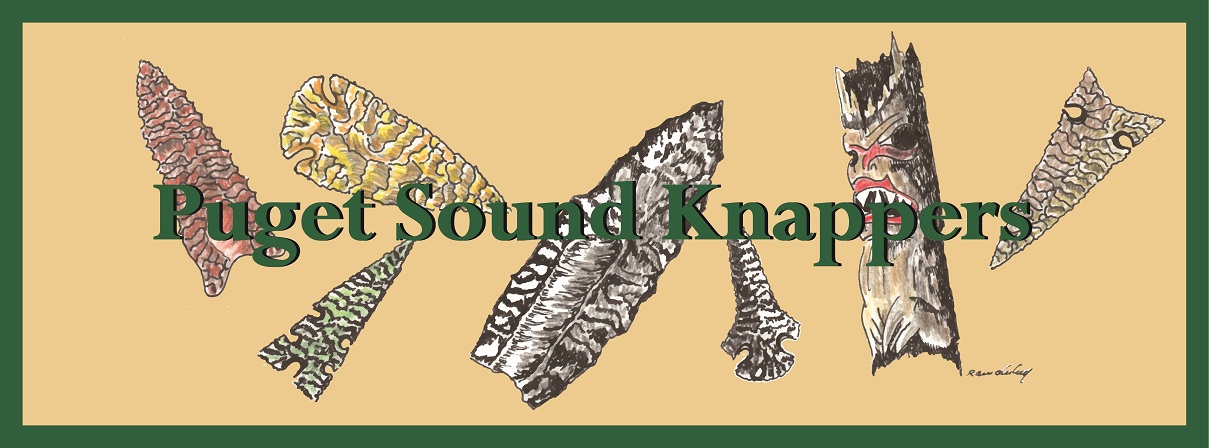 |
 |
|
Pedernales Associated Dates: 6000 - 2000 Y.B.P. - Mid-Archaic to Woodland Also See: Buzzard Roost Creek, Gower, Hoxie, Jetta, Kirk Serrated, Langtry, Marshall, Montell, Uvalde, Val Verde Location: Midwestern States especially Texas Morphology: Bifurcated
General Description: The Pedernales is a medium to large sized point that is usually barbed with a broad, long, bifurcated base. The blade edges are either straight, convex, or concave to recurvate. The general outline of the blade can run from very triangular to leaf shaped .Dimensions, length and shape vary greatly with the Pedernales point. The type is thin and well made usually with high quality flaking. Some specimens can have extended barbs which angle back to the base or out to the sides. The stem is usually straight but may be slightly contracted. The bifurcations of the stem base edge range from pointed to round. The basal edges are typically not ground. The basal edge is concave, usually deeply so, and is thinned by the removal of large flakes and may appear near beveled on some specimens. Early examples can have thinning flutes on either one or both faces of the stem area. The distal end is usually acute and often times the tip is needle-like
ABOVE: PED01: Pedernales points, arranged L-R from earliest form to latest The Pedernales resembles the Montell point in general outline however, the Pedernales is strongly bifurcated. The Pedernales has a rounded to pointed effect at the basal corners while the Montell has a definite squared look at the basal corners.
The Pedernales is primarily a Central Texas point with occurrences less frequent in adjacent areas of Texas. The point has many outline variants, the better known being the type with the bifurcated stem. Those specimens with a slightly concave basal edge are more difficult to identify as they have similarities to Langtry points. Additionally, those specimens that have had their shoulders reworked away resemble early lanceolate or fluted lanceolate points. The size of the Pedernales can range from 30 mm to 130 mm in length with typical sizes in the 60 mm to 90 mm range. The width ranges between 26 mm to 50 mm. The stem width ranges between 15 mm and 30 mm. The stem length ranges between 15 mm and 23 mm. The point was named the "Pedernales Indented Base" by J. Charles Kelly from specimens that he found in Central Texas in 1947. It was named after the Pedernales River which flows through that area of Texas. Additional descriptions of the point type were made by E.O. Miller and E. B. Jelks in 1952. Jelks shortened the name to Pedernales in 1952. ABOVE: PED02: Pedernales point; described below The point pictured at the left is from the Darby Ranch, Williamson County, Texas.
It is made from light coffee colored flint that is faintly speckled with light tan inclusions. It measures 77 mm in length, 30 mm wide at the shoulder barbs, and is only 9 mm at its thickest point at the barbs in mid blade. The blade which is of the rapier style is a uniform 4 mm in thickness. The blade edges are straight and are quite sharp. The stem is 22 mm long, 22 mm wide and the bifurcated base is 5 mm deep. The base of the stem and the stem sides have been slightly ground. Catalog Number 10-43-H ABOVE: PED03: Pedernales point; described below The point pictured at the center is also from the Darby Ranch, Williamson County, Texas. It is made from light coffee colored flint that is faintly speckled with light tan inclusions. It measures 62 mm in length, 28 mm wide at the shoulder barbs, and is only 7 mm at its thickest point (just above the flutes at mid blade) with the blade being a rather uniform 5.5 mm in thickness. The blade edges are slightly convex and are still quite sharp. The stem is 22 mm long, 24 mm wide and the bifurcated base is 7.5 mm deep. The blade is fluted on both sides with a single primary and secondary flute. The flute on the pictured side is 28 mm long and the flute on the opposite, non-photographed side is 17 mm long. The base of the stem and the stem sides have been slightly ground. Catalog Number 11-39-H
ABOVE: PED04: Pedernales point; described below The point pictured at the centre, above, was found along the Fire Creek, Gillespie County, Texas.
It is made from light gray colored chert that is faintly speckled with light tan, darker gray and white inclusions. It measures 75 mm in length, 29 mm wide at the shoulder barbs, and is 9 mm at its thickest point (just above the flutes at mid blade) with the blade being a rather uniform 5 mm in thickness. The blade edges are nicely excurvate and this specimen displays a probable pristine and unreworked outline. The stem is 21 mm long, 23 mm wide and the bifurcated base is 7 mm deep. The blade is fluted on both sides with a single primary flute. The flute on the pictured side is 31 mm in length. The base of the stem and the stem sides have been not been ground. (TEXT SOURCE: Art Gumbus, Lithics-Net) |
|
©2010 J Keffer |